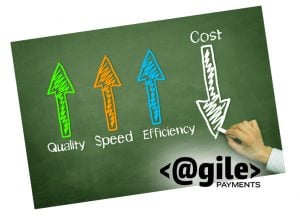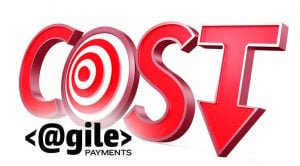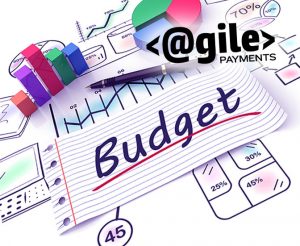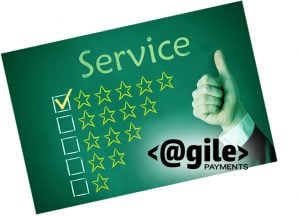SaaS company spends will vary, because the service/business model is different from a normal business model. SaaS companies are always under extreme pressure to grow recurring revenues. The company’s goal is to pay itself back for the cost of acquisition, and before churn catches up.
 Therefore, their concern is always with growing quickly and paying off their initial overhead spend. Marketing has to be an important part of their business plan.
Therefore, their concern is always with growing quickly and paying off their initial overhead spend. Marketing has to be an important part of their business plan.
Concern is with growing quickly and paying off initial overhead spend. Marketing has to be an important part of their business plan.
Let’s take a look at several major players. Of course, the numbers may vary, but those who watch the industry closely are usually right on the money.
1. Salesforce. The company is a major provider of SaaS. They spend close to 53% of their revenue on sales and marketing.
2. Constant Contact. This company spends close to 38% on sales and marketing.
3. Marketo. Spends close to 67% of their budget on marketing and sales incentives.
4. Manhattan Associates. This company only spends 11% on marketing and sales efforts.
5. Bottom Line Technologies. Their tally totals 24% of their budget.
6. Tableau. Spends 53% of their revenue on sales and marketing.
Your company’s annual spend on sales and marketing will depend on your products, services, and talents of your team. Marketing budgets will vary, but a safe estimate of marketing and sales spend should be anywhere from 10-40 percent of your annual recurring revenue (ARR).
Another way of deciding how much to spend on sales and marketing is to frame it as a percentage of revenue-growth. Consider your growth delta (how much in dollar amounts) and roughly divide this in half to determine your annual spend. Let’s say your growth delta is $2.5 million. You can assume your marketing budget will be roughly $1 million.
Figure Out Your Budgeting Balance
Of course, everyone knows there is no “one” magic formula that can be followed by every SaaS company. Their marketing strategies will be a varies as the products and services offered. What can be reasoned is there are certain general rules that any company can follow—rules that are timely and that make sense.
Once you have an idea of what you will spend, the next goal is to perform a simple bottom up calculation. Spend too little, and you will never create the desired growth. Spend too much, and you can quickly burn through capital and leave yourself short of ever seeing a profit.
Save Money with Inbound Marketing
As everyone knows, SaaS companies must grow monthly revenues fast enough to offset the costs of acquiring each new customer. Low cost, smart, inbound efforts can help in a big way. Inbound marketing efforts usually average $135 per lead. This can be done through social media marketing at relatively little cost.
 SaaS companies must grow monthly revenues fast enough to offset the costs of acquiring each new customer. Low cost, smart, inbound efforts can help in a big way.
SaaS companies must grow monthly revenues fast enough to offset the costs of acquiring each new customer. Low cost, smart, inbound efforts can help in a big way.Consider blogging and becoming a respected thought leader in your industry. Blogs can create up to 60% more visitors and generate more than twice as many leads as companies without a blog. Blogs also allow companies to nurture and inform their customers. Inbound should be one of your long-term investment strategies.
Just keep in mind that you should not slash your marketing budget because inbound works. Inbound allows you to achieve a lower cost of acquisition (CAC) over time. This, combined with normal marketing techniques should help you reach your goals.
 Consider Budgeting Benchmarks
Consider Budgeting Benchmarks
Budgets will depend on factors such as initial funding, state of revenue, and what growth stage your business is experiencing. SaaS companies will always need to spend more in the early stages on growth to create brand awareness and adoption by customers.
Budgets will depend on factors such as initial funding, state of revenue, and what growth stage your business is experiencing.
Set Budgeting Constraints, Not Limits
This may turn a few heads, but there is a reason for suggesting this. The truth is you should look at budgets as investing, and not spending. And of course, it should pay for itself. Get serious about testing out new lead generation channels.
Often, marketers will run a test just to run a test. There is nothing wrong with testing to evaluate the effectiveness of an incentive before diving in head first. However, if the results are good, run with the campaign.
How Do You Know if Your Test is Worth Scaling?
There are three criteria to consider.
• Conversion Rates – Simple enough. What percentage of web traffic is converting into a true lead? Just keep in mind that conversion may not mean the same thing for everyone. You have to nail this one down to the ground and determine if a conversion is someone who signs up for a free trial, demo, or someone who is requesting to speak to sales.
There is also the channel to consider with respect to a successful conversion. Is someone reaching your site through Twitter likely to convert more than someone reaching you through a Google search?
• Close Rate – Once you have determined what a lead is, what percentage are becoming customers? What percentage of the free trial or free demo group will you reach out to and upgrade to paying-customer status?
• Targeting CPA – As you progress, what amount of money are you willing to spend on acquiring new customers? SaaS companies usually determine this number as a percentage of the average revenue acquired from a customer. Normally, 10% of the customer’s expected revenue is spent on acquisition costs.
 Retaining SaaS Customers
Retaining SaaS Customers
Retaining your SaaS customers has to be a factor of sales and marketing incentives. After all, the less you spend in acquisition, the more you can spend in other areas of the company.
The following methods can help you retain those valued customers and even upgrade them for additional products and services.
1. Keep your customers engaged. You will eventually lose customers who are not engaged with your product. They simply will not keep paying for it. Almost 90% of cancellations, of any product, are due to users who no longer find value in their subscription. Lack of customer use is the number one reason for churn.
2. Are you keeping an eye on cancelled or expired credit cards? Most credit cards have a three-year life span. This could mean that up to 3% of your credit card subscriptions will cancel during any given month. Greater than one-third of your credit card customers will expire over the course of a year.
This is lost business that no company can afford. This means that you will be facing credit card expirations on a regular basis. Another term for credit card cancellations is churn.
3. While paying attention to your current customers is great, keep selling. You already know that you can lose customers who are not engaged and that a credit card can cancel at any given moment.
So, back to acquiring new customers and figuring out what your ROI will be. You have to keep bringing in new customers and making sure they are satisfied and are engaging your products and services. Keep things scalable in ways that new customers can easily grow into new products. This all makes upselling a lot easier and practical.
4. Keep improving features that matter. There will always be some features that matter to customers more than others. When they become apparent, keep improving their value and quality to customers. Even upgrading the best features of your product will help retain customers.
5. Keep upgrading the customer experience – Customers are in it for the experience as well as the software. Consider speed, features, cost, purchasing processes, renewal process, and customer service. Keep customer service and level of correspondence in mind as well. Everything that has to do with your product should be constantly considered. Your entire product and services associated with it equate to the customer’s experience.
You may even consider giving discounts and random rewards. Restaurants know that giving something as simple as a mint after a meal can increase tips by almost 25%. People like to feel rewarded; to receive something unexpected. Get together with your team and brainstorm ideas. Some ideas may include extra storage, free features, a month of free services, or a percentage discounted over a year.
Transparency Is Still the Key
Customers are always wanting to know where their hard-earned money is being spent. They may see a lot of software with a big price tag. They may also notice there does not seem to be a lot of overhead spent by the provider. Will this cause a skeptical customer to raise an eyebrow or two?
Sure, developing and marketing costs are part of the equation, but customers will still raise an eyebrow if they think messaging is opaque. Keep in mind too that companies are concerned with security breaches, so there is a certain amount of lagging distrust.
Find a balance and correct spend for your marketing efforts, but keep in mind how important it is to retain and satisfy your present customers. It all falls under the roof of marketing and sales.
{{cta(’14dfd450-6b84-4e0b-b220-6ae0b7c7f2d6′,’justifycenter’)}}


 Consider Budgeting Benchmarks
Consider Budgeting Benchmarks Retaining SaaS Customers
Retaining SaaS Customers


